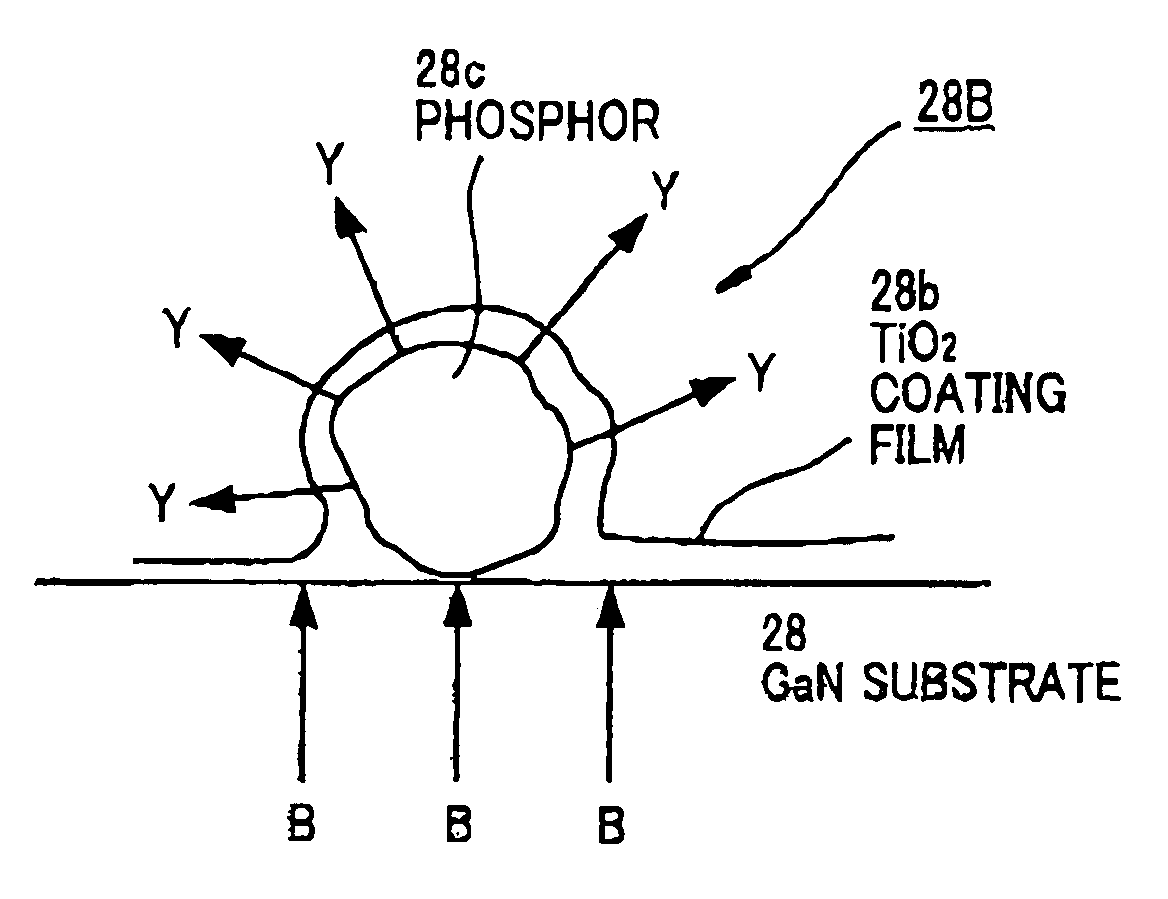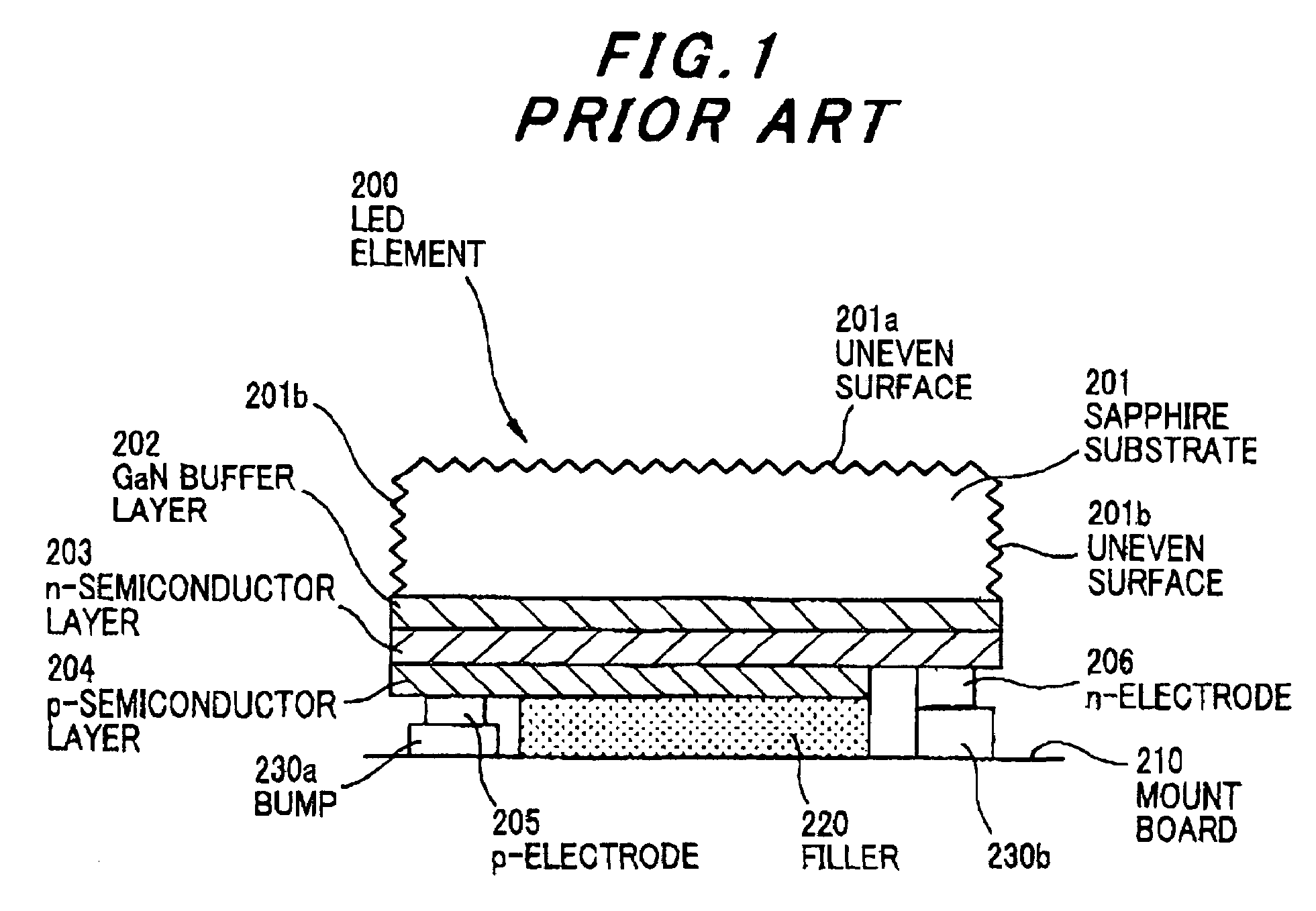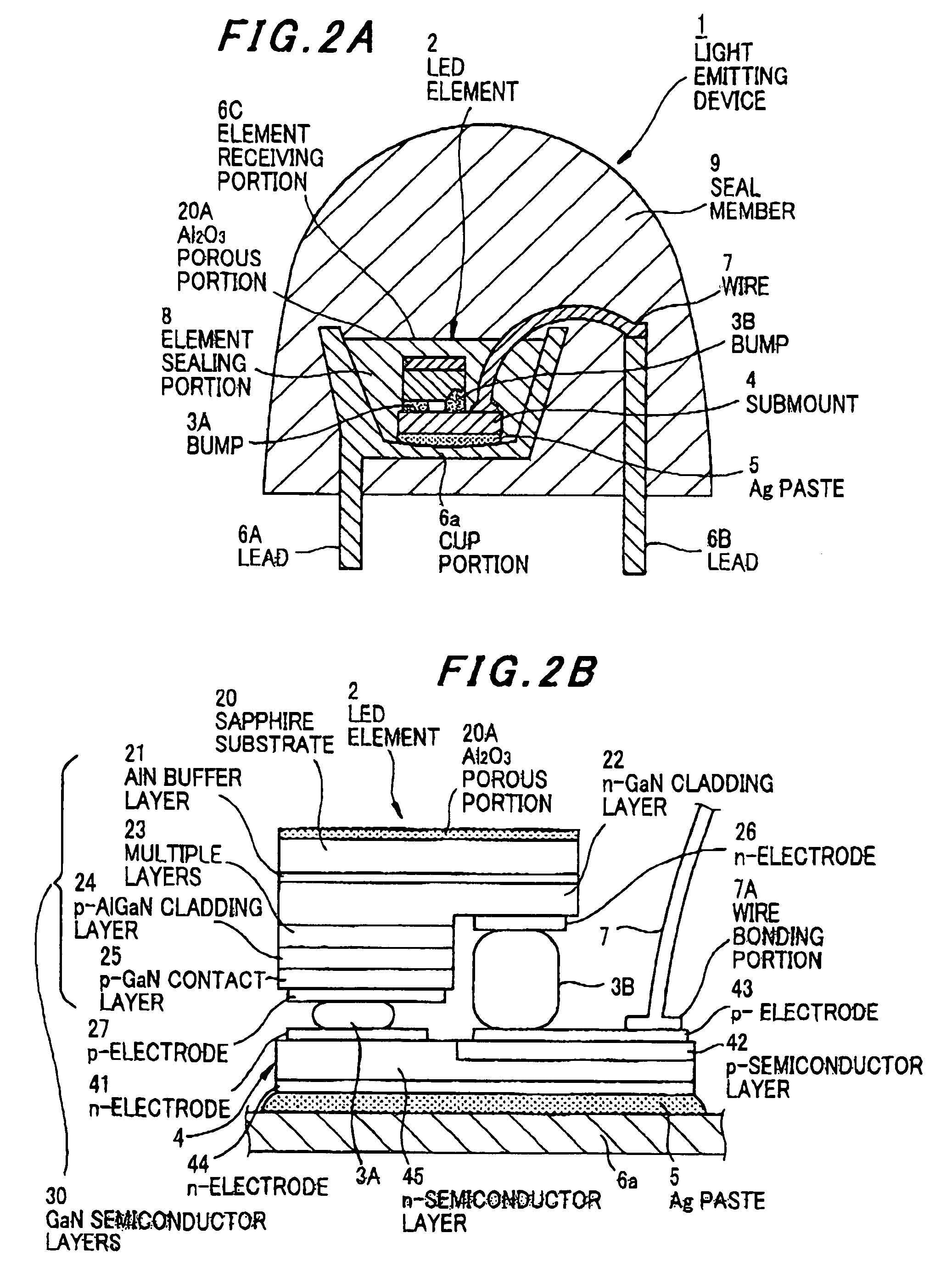Light emitting element and light emitting device
a technology light emitting element, which is applied in the direction of basic electric elements, semiconductor devices, electrical equipment, etc., can solve the problems of low light output efficiency, low efficiency of light emitting device, and inability to obtain snosub>2 /sub>film, etc., and achieve the effect of improving external radiation efficiency
- Summary
- Abstract
- Description
- Claims
- Application Information
AI Technical Summary
Benefits of technology
Problems solved by technology
Method used
Image
Examples
first embodiment
Effect of First Embodiment
[0060]In the first embodiment, by providing the Al2O3 porous portion 20A on the light extraction surface of sapphire substrate 20, even part of light with an incident angle greater than the critical angle at the interface can be externally radiated while allowing the transmission (external radiation) of light with an incident angle smaller than the critical angle at the interface. Therefore, the light component to be attenuated due to the optical absorption in the LED element can be reduced and as a result the external radiation efficiency can be enhanced. In other words, even the light components in the range of θ2 to θ3 as shown in FIG. 3 can be externally radiated by using the Al2O3 porous portion 20A.
[0061]Further, even when the LED element 2 is sealed with epoxy resin, the light extraction property can be improved since the diffusion of light is also generated at the interface of air in the Al2O3 porous portion 20A and the surround.
Second Embodiment
[Co...
second embodiment
Effect of Second Embodiment
[0066]In the second embodiment, by using the GaN substrate 28, light generated from the multiple layers 23 is not subjected to reflection at the interface of the nitride-based semiconductor layers 30 and the GaN substrate 28.
[0067]Further, by providing the TiO2 porous portion 28A with a refractive index greater than that of the GaN substrate 28 on the light extraction face of GaN substrate 28, the reflection at the interface of the GaN substrate 28 and the TiO2 porous portion 28A can be reduced and the entering of light into the TiO2 porous portion 28A can be more increased. As a result, the external radiation efficiency can be enhanced.
[0068]Further, since the TiO2 porous portion 28A is included in the apparent size of LED element 2 as a light emitting body, the light emitting element can offer high brightness as compared to the conventional light emitting element with the same size. Namely, the LED element 2 with the TiO2 porous portion 28A can have an i...
third embodiment
Effect of Third Embodiment
[0073]In the third embodiment, adding to the effects of the second embodiment, the TiO2 portion 28B can have an enlarged surface area due to containing the TiO2 particles 28a.
[0074]Further, since light entering into the TiO2 portion 28B is diffused by the TiO2 particles 28a, the external radiation efficiency can be enhanced.
[0075]Further, with the roughened surface of material with a refractive index greater than 2.4, the light extraction efficiency can be significantly enhanced even when the LED element 2 is sealed with epoxy resin.
[0076]Light-diffusing particles of a material other than TiO2 may be contained in the TiO2 portion 28B. In this case, it is required that the light-diffusing particle is transparent to emission wavelength, and it is desirable that the light-diffusing particle has a refractive index equal to or greater than that of the TiO2 coating film 28b.
Fourth Embodiment
[Composition of LED Element 2]
[0077]FIG. 6 is an enlarged cross section...
PUM
 Login to View More
Login to View More Abstract
Description
Claims
Application Information
 Login to View More
Login to View More - R&D
- Intellectual Property
- Life Sciences
- Materials
- Tech Scout
- Unparalleled Data Quality
- Higher Quality Content
- 60% Fewer Hallucinations
Browse by: Latest US Patents, China's latest patents, Technical Efficacy Thesaurus, Application Domain, Technology Topic, Popular Technical Reports.
© 2025 PatSnap. All rights reserved.Legal|Privacy policy|Modern Slavery Act Transparency Statement|Sitemap|About US| Contact US: help@patsnap.com



